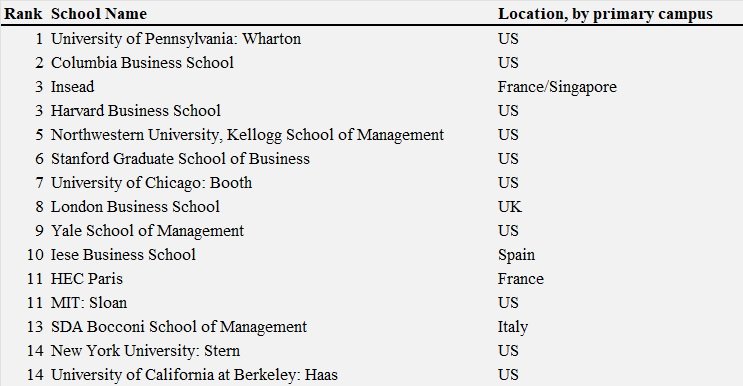The Financial Times just released its 2023 Global MBA rankings. Schools located in the U.S. performed well, making up three of the top five spots and twelve of the top fifteen. For the first time in the ranking’s history, Columbia University took the top rank. Notably, last year’s number one ranked program, University of Pennsylvania’s Wharton School was not ranked at all due to not meeting the minimum response threshold on the alumni survey. Poets & Quants notes that while other schools have suffered the same fate in previous years, it has never occurred at such a prestigious program, likely causing embarrassment at both Wharton and the FT. In addition to last year, Wharton has garnered the top rank ten times since the ranking’s debut in 1999.
Also of note, amidst the controversy surrounding the U.S. News’ rankings for medical and law schools, the FT updated its methodology for this year’s ranking. While the ranking still maintains an emphasis on outcome measures, including employment three years past graduation, salary, and salary change from pre- to post-MBA, the FT has also increased the weight given to metrics related to societal goals. These include social mobility, which uses metrics such as financial aid, study costs, and post-MBA earnings, as well as gender parity and student diversity, and sustainability and the environment.
Rank School Name
1 Columbia
2 Insead, France/Singapore
3 IESE, Spain
4 Harvard
4 Stanford
6 SDA (Bocconi), Italy
7 UC Berkeley (Haas)
8 Cornell (Johnson)
9 Northwestern (Kellogg)
10 Yale
11 Duke (Fuqua)
11 MIT (Sloan)
11 University of Chicago (Booth)
14 UCLA (Anderson)
15 Dartmouth (Tuck)


